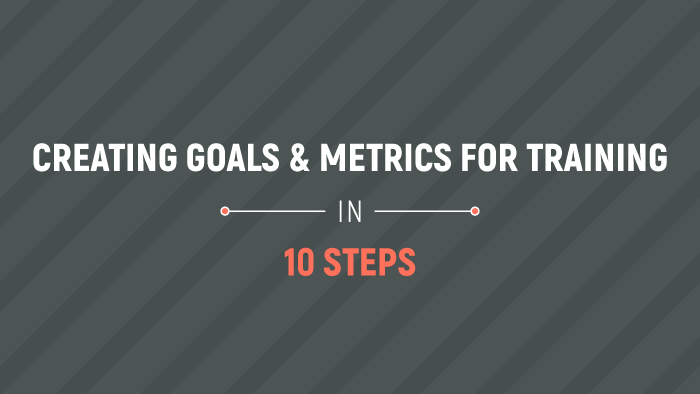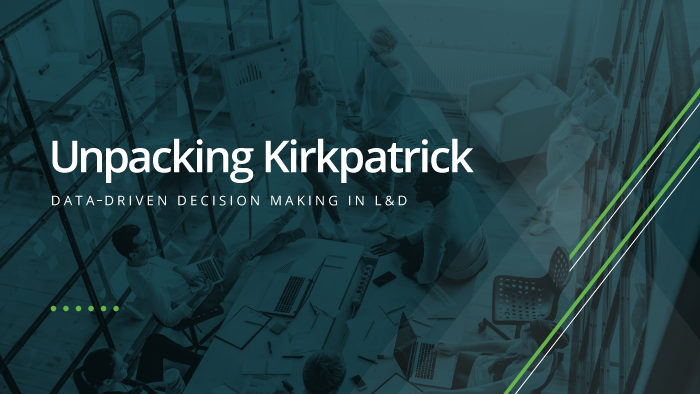The goal of learning and development is to teach and develop employee behaviors all while sharing knowledge that enables them to do their work better and more efficiently. Over the years, L&D has seen many shifts – the uncertainty of the future, dispersed workforces, multiple generations working together, and technology booms – and they’ve had to adapt with every coming change.
These occurrences will never quite disappear, so implementing the right L&D approach is vital. Let’s look at how to develop a high-performing L&D program that will help you increase business KPIs and boost employee efficiency.
Benefits of an L&D Program
There are many benefits to having a strong L&D program.
In the short term, a program can:
- Help manage conflicts and tasks. Having a strong program reduces the severity of conflict by teaching conflict resolution strategies. As for managing tasks, managers can delegate tasks more equitably depending on each employees’ workload and skillset.
- Identify and close skills gaps. Skills gaps need to be identified and addressed to keep organizations running smoothly while also keeping employees happy and motivated. The program should teach the skills lacking in the organization (or in certain employees), and they should be aligned with business goals.
- Teach technological skills. Technology is constantly changing, so having a program that can address this will help the organization maintain productivity through these advancements.
In the long term it can:
- Boost employee retention and motivation. Providing professional growth opportunities makes employees feel valued leading to higher productivity and willingness to stay. According to the 2019 LinkedIn Learning Report, 94% of employees say they would stay at a company longer if it invested in their learning and development.
- Help attract the best talent. Those looking for jobs also want learning experiences in their next employment opportunity. By developing a culture of learning, you will be able to attract employees with similar values as your organization and that are interested in continued growth and development.
- Provide promotions from within. There’s no need to expend resources to advertise positions, read applications, and interview external candidates if you are able to develop the skills of your current employees and set goals for career growth. This also cuts down on lost productivity.
- Save time and money. While promoting from within saves time and money, so does having an established library of knowledge. It can be reused over and over again and adapted to fit the situation. This repository can include blogs, white papers, videos, quizzes, reports, scenarios, and more.
- Build stronger relationships and improve communication. Establishing a learning program and letting employees share in the experience increases engagement both in training and their roles and helps build a more open company culture. When a culture encourages open communication, employees feel comfortable communicating their feelings because they know they’ll be valued and heard.
Developing an L&D Strategy
Every organization wants a healthy culture, and with that, comes a culture of learning. It’s important to set up a strong L&D strategy to reach the end goal of a strong culture. Here are some steps to get started:
1. Getting Leadership Buy-In
One of the keys to a successful training program, and possibly the most important, is having leadership buy-in. It can be a difficult and daunting task but check out these statistics that will help you on your way.
2. Analyze Training Needs
You’ll need to see where the company and employees stand on current knowledge to begin assessing training needs. Reciting information employees already know will stall engagement in the training, so it’s important to provide ways for employees to learn new knowledge and skills.
3. Setting Training Goals
Identifying goals requires further analysis about where the organization wants to go and what skills are needed to get there. This should be when starting a program and when evaluating the program for upskilling and reskilling opportunities within your workforce.
Organizational Analysis
This phase looks at the short- and long-term goals of an organization. You’ll define the training needs that will help set business goals.
Function/Task Analysis
This phase looks at the competencies and skills that are required to be successful in a job. You’ll work to identify which skills and competencies are most important for employees to be successful in their jobs and which are the simplest to learn.
Personal Analysis
This phase studies employee performance reviews to better understand the skills and competencies that employees have. This also helps define training needs.
For more information on setting goals and metrics for training, check out our infographic that shares 10 steps to creating strong goals.
4. Establish Learning Objectives
Developing learning objectives plays an important role in training. They are what describe the outcomes you desire from your training program. Having clear objectives helps communicate the benefits of training to your staff.
Here are some important tips on how to set these up:
- Align learning objectives to business goals.
- Keep them, short, simple, clear, and concise.
- However, be specific about the goal.
- Set realistic and achievable outcomes.
5. Design Training Materials and Implement Program
This step is when decisions are made regarding training material, teaching methods, and learning activities. There are a few different approaches you can take when setting up your training program.
The first is in-person classroom learning. While this allows for everyone to train together, there are some deterrents. This pulls everyone out of their workflow for an extended period of time, limiting productivity. It also costs money to bring in trainers if you don’t have them in house as well as bringing remote teams together in the office.
Another option is microlearning videos. Microlearning delivers skill-based learning and education in bite-sized sections. It can be delivered via text, video, ebook, interactive multimedia, and more, but it is always short, averaging between five to ten minutes. In the study “Micro-Learning: A Modernized Education System,” 81% of respondents said that microlearning is the best learning system for their working environment.
And the third option is a blended learning program.This approach takes training out of solely being in the classroom or solely being online and combines the two. More than one delivery method is used because no one solution can be a good fit for every training need.
6. Evaluate Your Program
In this phase, learning objectives are evaluated, and the effectiveness is assessed. Consider the following metrics to measure success:
Cost
Make costs a vital component in your L&D analytics. Take stock of any changing spending patterns (especially for in-person training.) It’s simply not viable to just throw money and resources at things that might work.
Feedback
Ask your employees to regularly evaluate the training they are receiving and provide feedback on how it could be better suited to their needs. This gauges satisfaction with your strategy and allows you to adapt as needed.
Utilization
Monitoring online training content usage, completion rates, and more offers a glimpse into how employees are using your training and allows you to see which skills they are focused on developing. This helps keep training engaging and provides the information you need to show leadership the ROI of your program.
The best way to review and report on these metrics s is through a learning management system.
Best Ways to Implement Technology in Your Program
Through the ages, learning has been made easier with advancements in technology. CDs gave us massive amounts of storage for data, helping boost computer-based training systems and video content. The Web meant we could have access to information from around the globe, opening doors to content previously closed off to us. And then came social media, which provided a way to interact easily and learn from others while creating like-minded communities of people.
These were just precursors to what can be done with learning today. Let’s look at how technology is changing L&D.
Social Learning
Employees seek a sense of community and connection with their peers, so social learning is a great tool to implement. Social learning is when employees learn together and doing so in virtual environments is very valuable, as workplaces become more dispersed. Social learning helps ideas “stick” with learners and drives engagement. LinkedIn Learning found in their Leading with Learning: Insights and Advice About the New State of L&D report that 75% of other L&D pros expect social learning to increase via online learning groups and Q&As.
AI and Chatbots
Artificial intelligence (AI) gives outputs based on a large amount of data. These machines learn from experience and can adjust to new inputs allowing professionals to facilitate customized learning based on employee behavior. Just like Netflix can offer up suggestions about what to watch, AI in training can offer new training ideas for learners.
Chatbots are conversational interfaces powered by AI that aim to facilitate human-like conversation. In L&D, chatbots can disseminate quizzes, deliver practice and assessments, and perform a skills gap analysis to ask questions. You can also use chatbots to start a conversation, and then have a human step in when needed.
Gamification
Gamification is a way to make learning and development fun and sometimes competitive. Because learners feel like they are playing a game, such as moving forward through a pathway like Candyland, they are more engaged, and retention increases.
By adding in a competitive element, such as a leaderboard, employees can share in their victories, and you can increase engagement with your program.
Mobile Learning
According to the Pew Research Center, as of 2020, nearly 85% of Americans owned a smartphone and nearly 66% own both a smartphone and a tablet. Using a smartphone or tablet in L&D has many benefits. Being able to access content on a convenient device is beneficial for your learners because they can access training anytime, anywhere.
To best utilize these and see how they fit best into your program, consider teaming up with a content partner.
Teaming Up with a Partner
Developing a strong, high-potential learning and development plan and then implementing and maintaining it can be a daunting task, but it doesn’t have to be. Having a strong partner in the process can make it easy. Watch this preview to see what kind of videos we can provide.

BizLibrary provides a team of expert advisors that can help provide the tools and resources needed for a successful learning program. They know best practices for gaining leadership buy-in, developing marketing and communication plans, and executing successful program management.
We also provide help with communicating and marketing your training program once it is in place by providing ideas, samples, and language to engage employees, and information explaining the “why” of training for stakeholders in the program.
Lastly, we train administrators on how to best fit our solution into your workplace. We have training resources and materials to allow for practice in the system and provide refresher training throughout the year.
It takes time, effort, and dedication to establish and maintain an L&D program that’s going to engage learners and produce results, but with the right plan and partners, you can have a high-potential strategy in place that fits your organization, even as the changes keep coming.


